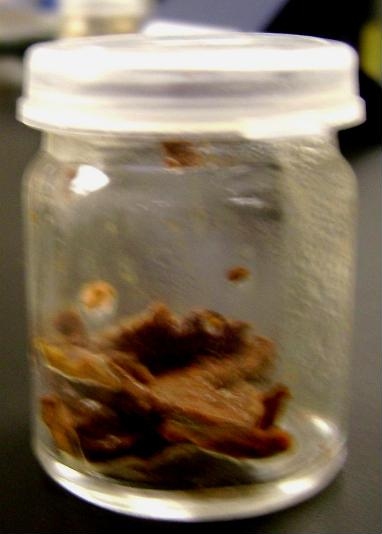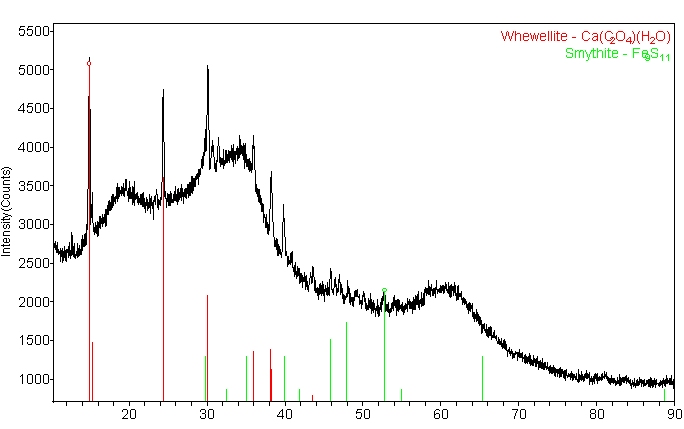Background
X-ray diffraction (XRD) is an excellent analysis technique for identifying unknown solid materials. The XRD pattern can act as a fingerprint to identify unknown materials in crystalline and semi-crystalline samples.
Investigation

Figure 1 is a picture of a sludge presented from a deteriorated water pump. The X-ray diffraction pattern of this material (Figure 2), acquired using a Rigaku MiniFlex benchtop diffractometer, reveals that this sample contains both crystalline and amorphous components. The broad humps in the pattern come from the amorphous component(s) while the sharp peaks come from the crystalline portion. By determining the location and intensity of the crystalline diffraction peaks and matching to a known database of crystalline materials, it is possible to identify the crystalline component of the sample.

In this case the peaks reveal that the material contains both calcium oxalate monohydrate and iron sulfide.
